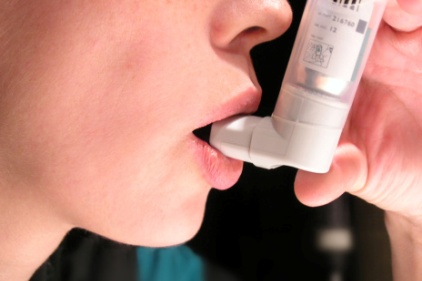Step 2: Get help from your healthcare provider for your breathing problems.
Make sure to see your healthcare provider as soon as you start having symptoms. Asthma can be controlled but requires two things – limiting or avoiding exposure to an asthma triggers and using asthma medicines as prescribed by your doctor. An asthma action plan can help!
It is important to keep track of your symptoms and remember everything you need to share with your healthcare provider. Here are some tools that will help you give your doctor all the information he or she needs to properly link your workplace to your asthma symptoms.
Keep a log or diary of your symptoms and bring it into your physician.
Make sure to tell your provider about new symptoms and where you work. Download the Getting Ready for Your Office Visit form and complete the sections to improve the time that you have together.
Step 3: Report respiratory symptoms immediately as well as breakdowns in ventilation and other protective equipment to your employer. Your co-workers also may be at risk.
- Let your supervisor and building management know there may be a problem. Follow the usual and proper steps to alert them, as you may need to document the steps you took later.
- Tell your health care provider about your symptoms. Report the symptoms to your company's health or safety officer. The state or local health department may also need to be informed. Ask the health or safety officer if you should do that yourself.
- Work with management as they investigate the problem. The process may take longer than anyone wants because the underlying problems may be difficult to identify.
- Your employer is legally responsible for informing you of general and specific hazards connected with your job. Your employer is also responsible for providing you with a safe and healthful workplace. You can help by being alert for unsafe and unhealthful working conditions and reporting any problems.
Review the American Lung Association’s Signs of Potential Problems for more information on recognizing hazards and investigating the problem.
- Request a Health Hazard Evaluation. If you suspect a health hazard at your workplace, employees, employee representatives, or employers can request an evaluation of possible health hazards associated with a job or workplace. The Centers for Disease Control and Prevention, National Institutes of Occupational Safety & Health can provide assistance and information by phone, in writing, or may visit the workplace to assess exposure and employee health.
Step 4: Take care of your asthma. See your healthcare provider regularly, take medications as directed, and avoid environmental exposures that worsen your asthma.
Asthma is a lung disease that makes breathing difficult for millions of Americans, both young and old. There is no cure for asthma, but the good news is it can be managed and treated so you can live a normal, healthy life. The American Lung Association has a number of resources to help.
- Learn more about asthma. The better you and your loved ones can manage living with this disease, making the most of every day, and maintaining the quality of life that is important to you.
- Participate in Asthma Basics. Asthma Basics is a 50-minute online learning module targeted to adults and caregivers interested in learning more about asthma. Participants that complete the course are able to recognize and manage asthma triggers, understand the value of an asthma action plan, and recognize and respond to a breathing emergency. This course is quick and easy and includes videos and downloadable documents.
- Six action steps to keep your asthma under control. Once you have an understanding of what it means to have asthma, it’s time to find out what you can do to manage the disease.
Questions about your lung health? Talk to a lung health specialist at the Lung HelpLine. 1-800-586-4872 (1-800-LUNGUSA).



